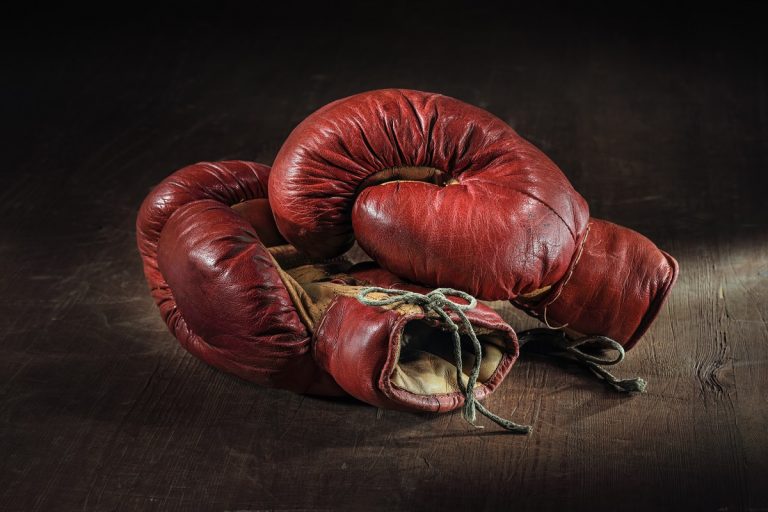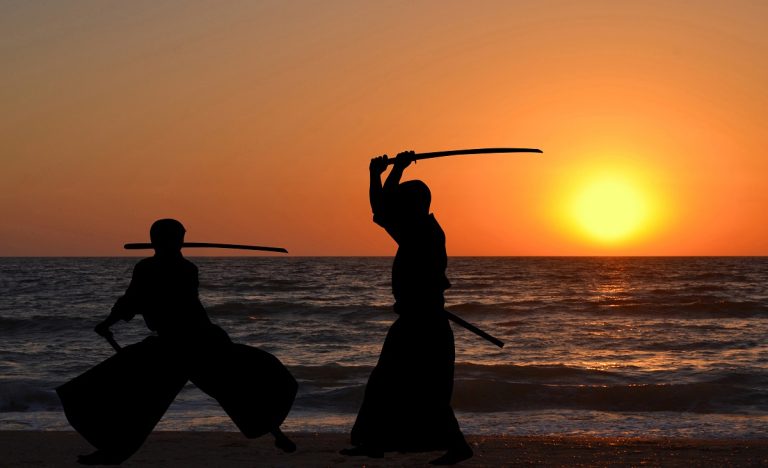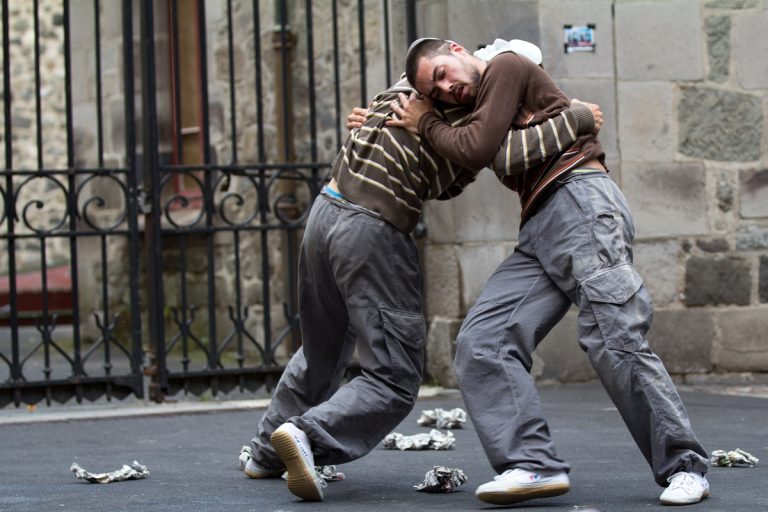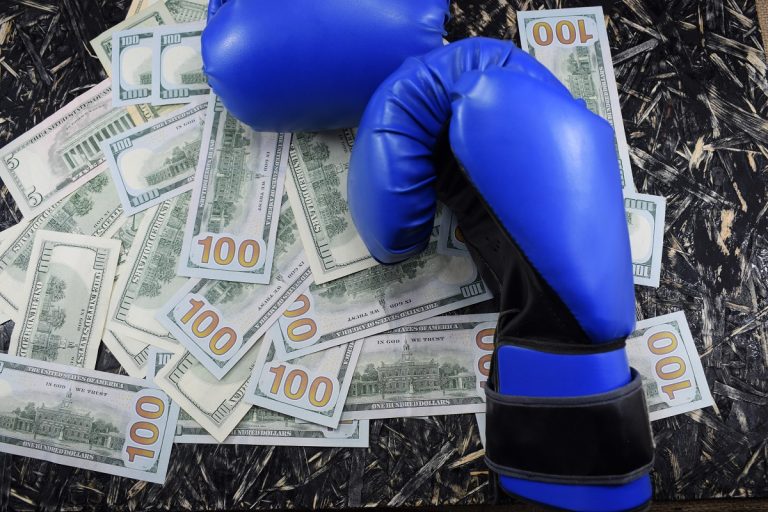How to Measure Reach in Boxing (5 Easy Steps)
Boxing is a sport where your opponent is determined purely by your weight. Fighters are classed based on weight to ensure a more even playing field.
Factors such as muscular strength, endurance, power, agility, and skill level all play a factor in determining who’s the best fighter at a given weight class. These factors are determined by a mix of genetics and hard work. It makes sense that fighters who put more work in at the gym would have a better chance of winning.
Outside of these factors, other considerations need to be made before fighting an opponent. Genetic factors that can’t be changed, such as the length at which an opponent can reach can have a huge influence over the outcome of the fight. It stands to reason that a fighter who can utilize a longer reach more efficiently may have an advantage over an opponent with a shorter arm length.
What is Reach?
Reach is defined as the total length of someone’s arms from one fingertip to the other. You can think of it like a boxer’s wingspan, similar to when a bird stretches its wings out.
How to Measure Reach? (5 steps)
To accurately measure reach in boxing, follow these 5 steps. Having a friend to help can also ensure a more accurate result.
1. Pre-measure: Remove clothing
Before taking a measurement, remove all upper body clothing that may interfere with the accuracy of the measurement. Even thin fabric can have a big difference in the precision of the measurement.
For males, the measurement can be performed with a bare chest while female boxers can wear a sports bra.
2. Pre-measure: Warm-up
After removing the appropriate clothing, take 5 minutes to warm up. Perform a combination of dynamic and static upper body stretches with some light exercise such as jogging, swimming, cycling, or shadow boxing.
Warming up before measuring ensures muscles are warmer and more flexible, giving an accurate reflection of how far your arms can extend once warmed up during a boxing match.
3. Lie or stand against a flat surface
Once you’re warmed up, find a flat surface. This can be on the ground or against a wall. Stand or lie with your back firmly against the flat surface, keeping your posture upright and shoulders straight.
Next, make sure the heels of your feet are flat against the ground or wall. Make sure you feel comfortable before performing the next step.
Stretch both arms out to your sides, ensuring they are at a 90° right angle. Ensure that both arms are parallel to the flat surface and the back of your hands are resting on the wall or floor with your palms facing outward.
This is best done with a partner who can check all the above steps before proceeding.
4. Stretch your arms out to make a T shape
Once you’re firmly against the flat surface, stretch your arms out fully, using your elbows and shoulders to extend fully. Whilst stretching out, align your body in a T shape. Make sure the tips of both your middle fingers are in a straight line when looking down each arm.
Allow your friend to adjust your positioning where needed as they will have a much better view of your current position.
5. Take and record the measurement
Now that you’re correctly positioned, the measurement can be taken. Whilst keeping still, get your friend to place a mark at the tip of both middle fingers on the wall or floor.
Once both marks have been made, you’re free to relax. Using a tape measure, measure the length between both pen marks. To accurately do this, ask your friend to hold the 0 mark on one end of the tape measure whilst you extend the tape to the other mark and take the measurement. Ensure the tape isn’t twisted before recording.
Note your reach on your computer or phone or jot it down on a piece of paper. Use whatever unit of measurement you’re more familiar with.
Importance of a Long Reach in Boxing
Whilst boxing classes are determined primarily by weight, reach can play a huge role in the outcome of the fight.
Put simply, boxers with a longer reach can hit their opponent from a longer distance without being hit back. If you can keep an opponent at distance whilst utilizing an effective jab, the opponent will find it harder to close the distance and technically be at a disadvantage purely due to a shorter reach.
If you’ve won the genetic lottery and you have a long reach, you still need to learn how to utilize it correctly before gaining an advantage over your opponent.
- Develop good footwork (Learn to move efficiently from a solid base. Moving in and out whilst using a long reach is a good way to move forward whilst protecting yourself at the same time)
- Switch it up (Just because you have a long reach, it doesn’t mean you should use it for the whole fight. A long reach is just one factor in a list of many that make a good fighter. Learn when and when not to use it and make sure to keep the opponent guessing so they don’t get used to your boxing style)
- Use your jab (Whilst keeping the above point in mind, use your straight jab effectively. If you’ve got a longer reach, make sure to use it. Use your hooks, but make sure you don’t get off balance with the longer arm length)
Reach vs Arm Length
Reach and arm length may sound like the same thing, but they are not.
Reach = Total length of someone’s arms from one fingertip to the other
Arm Length = Total length of one arm from the armpit to the end of the fist
Like reach, arm length is another common measurement used in boxing. To measure arm length, you can follow similar steps used when measuring reach.
First, extend one arm out perpendicular to your chest and ask your friend to measure the distance between your armpit and the end of your closed fist. Record the number then do the same with the other arm.
Whilst both are good measurements in boxing, both have their limitations:
As reach takes the back and shoulders into account, a broader boxer with shorter arms may record a longer reach, even if they don’t have one.
The measurement of reach can be quite open to inaccurate measuring. Several boxers were found to be intentionally shortening their recorded reach by failing to stretch out their arms correctly. This made it seem like they had a much shorter reach and led the WBA to use an alternative strategy – measuring arm length.
As arm length is the distance from your one armpit to the end of a clenched fist, it’s hard to fake. Arm length is commonly used to present boxer statistics as it’s become a more widely accepted measurement.
In any case, both reach and arm length should be measured to give a good overall representation of a fighter’s range and boxing capabilities.
What if You Have a Short Reach?
Whilst a short reach may put you at a disadvantage vs a boxer with much longer arms, it doesn’t mean that you can’t be successful. You just need to work smarter and harder to keep up.
As I mentioned above, boxers with a long reach can hit you without being hit back. They will try to keep you at distance by utilizing their jab effectively. With a longer reach, it will take longer for the punch to reach you.
If you have a short reach, fighting from the inside is a good option. This is where you put your opponent against the fence whilst landing punches. Having a short reach makes it much easier to land uppercuts and hooks, as you want to keep your arms closer to your body to generate more power.
Whilst fighting on the inside using uppercuts and hooks, bobbing and weaving is an excellent defensive maneuver. This is where you wait for your opponent to punch before ducking underneath, allowing you to quickly close the distance.
Using these tips effectively can help if you’re a boxer with a shorter reach.
Famous fighters and Their Reaches
Whilst taller boxers usually have a longer reach, this isn’t always the case and doesn’t always lead to success. Some famous fighters are well known for having a shorter reach in a heavier category or being world champions with a shorter reach than their opponents.
Mike Tyson – World renowned boxer, famous for winning 6 titles. A shorter boxer in the heavyweight category with a reach of 71 inches. Well known for effectively closing the distance on his opponents before unleashing a barrage of uppercuts and jabs. Tyson often had a significant reach disadvantage of up to 6 inches.
Manny Pacquiao – Despite having a smaller reach than most of his opponents at 67 inches, Pacquiao is regarded as one of the greatest professional boxers of all time. He is the first boxer in history to win the lineal championship in five different weight divisions.
Conclusion
Reach length in boxing is an important statistic to know. It can be measured quickly and easily with help from a friend. Remove loose clothing and warm up appropriately. Laying or standing against a flat surface, stretch both arms out into a T shape and ask your friend to take the measurements.
Having a long reach in boxing is an advantage but it doesn’t mean you can’t be successful. Once you know what your reach is, learn how to use it effectively using the tactics I’ve discussed above.
If you have a longer reach, use your jab effectively whilst trying to keep your opponent at bay. Learn how to move in and out by utilizing good footwork.
If you’ve got a shorter reach, fighting from the inside and bobbing and weaving defensively whilst using uppercuts and jabs are effective tactics.
Some of the best fighters in history have had much shorter reaches than their opponents. Keep that in mind when starting your own career.
FAQs
How long is a long reach?
According to the WBA, reach length is proportional to a boxer’s weight class.
In the heavyweight class, boxers have an average reach of 76.3 inches. Anything above 77 could therefore be classed as a long reach.
In the strawweight class, boxers have an average reach of 63.8 inches, meaning anything over 64 could also be classed as a long reach, relative to their weight category.
What are the reaches of other famous fighters?
Floyd Mayweather – 72 inches
Tyson Fury – 85 inches
Canelo Alvarez – 70.5 inches
Which boxer has the longest reach?
The longest reach officially recorded goes to Julias Long. Julias was 7ft 1 inches with a reach of 90 inches.
The longest unofficial record goes to Gogea Mitu. Not officially recorded, Gogea Mitu was 8 ft 2 inches tall with a reported reach of over 100 inches.
Which boxer has the shortest reach?
The award for the shortest documented reach in boxing goes to Rocky Marciano. Rocky was documented as having a 68 inch reach, which is short even for a shorter boxer. Rocky was in the heavyweight class.







